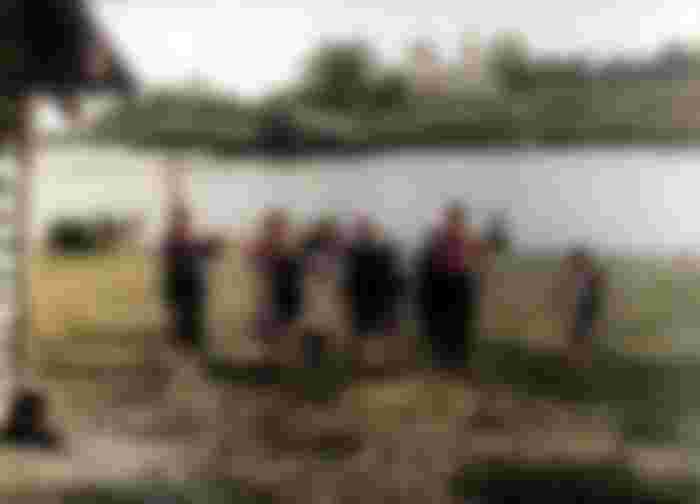Many of us have heard the story of the lost continent Atlantis. The Greek philosopher Plato first described a continent called Atlantis. According to Plato, Atlantis had its own civilization and culture, but the island continent was submerged due to the 'loss of the grace of the gods'. Although most analysts consider Atlantis to be a mere figment of their imagination, this "lost continent" has fascinated human imagination over the ages. Some have even tried to determine the location of Atlantis. From the vicinity of Egypt to the North and South Poles they explored Atlantis. But it has always been a mirage for Atlantis curiosities.
But in contrast to this fictional Atlantis there is a real Atlantis, the story of which is very similar to the fictional Atlantis. This Atlantis was also once prosperous, but later its Salil burial took place. Of course, the gods had no hand in this Atlantis massacre, the most destructive creature in the world, man!

The Atlantis is located in the province of Yaroslavl, northwest of Moscow, the current capital of the Russian Federation. The name of this Russian Atlantis was 'Maloga' (Моло́га). Maloga was an ancient city in Russia, located at the confluence of the Volga and Maloga rivers. The city has existed since the early twelfth century, as it is mentioned in Russian chronicles of 1149. At that time, Russia was relatively small, and in the early 13th century, the city of Maloga was part of the Rostov state. The state of Yaroslavl later occupied the city of Maloga. In 1321, Maluga itself became an independent Russian state, but within a short time, the most powerful Russian state, Moscow, occupied Maluga. From the late fourteenth century to the early sixteenth century, Maloga was one of the commercial centers of Russia. At the time, one of Russia's largest trade fairs was held in Maluga, and merchants from Europe and Asia took part.By the end of the fifteenth century, the city of Maloga had become one of the most important centers of trade between Russia and Asian nations. During this time a fort was also built to defend Maloga. During the socio-political turmoil in Russia in the early sixteenth century, Maloga became a commercial 'Sloboda' or duty-free commercial center.
In 17, Russian Empress Ekaterina II ('Catherine the Great') administratively transformed Maloga into a 'district headquarters'. The growth of the Volga trade route and the then capital of Russia, St. Petersburg, also led to the economic development of the city of Maloga. Maloga became an important port on the banks of the Volga River. Hundreds of ships sailed through Maloga every year, and these ships collected goods and other facilities from Maloga.

In 181, Mother Superior Taisia, the mistress of a monastery near Maloga, dreamed that she was walking in a rye field, which was gradually submerged. He continues to walk in the water and gradually the water rises up to his throat. At this time, someone gives him an object from the water, on which he tries to climb on the water. At this time the water began to recede again and the white stone walls of the monastery began to rise out of the water!

Mother Taisia recorded this strange dream in her diary, but she did not even know that in the next half a century, the true tomb of their beloved city would be buried!The Russian Revolution of 1917 brought the Bolsheviks under Vladimir Lenin to power in Russia, and in 1922 the Soviet Union was founded on the ruins of the Russian Empire. After Lenin's death in 1924, Joseph Stalin became the ruler of the Soviet Union. Under Stalin's leadership, industrialization began on a large scale in the backward Soviet Union.In the 1930s, the Soviet Union became one of the world's industrialized nations. And the city of Maloga became a victim of this industrialization.

The Soviet authorities ordered the evacuation of about 130,000 people from the town of Maloga and surrounding villages. Among them, those whose houses were made of wood, they opened them and transferred them by ship.And those who had stone houses were compensated by the Soviet government. These 'development refugees' from Maluga were resettled in other parts of the Yaroslavl province, in the neighboring provinces, and in Moscow and Leningrad. After the city was evacuated by 1941, all of Maloga's large buildings, factories, churches, and other buildings were blown up using explosives. The city was then submerged.

Malogar Salilsamadhi is, without a doubt, an example of the humanitarian catastrophe caused by Stalinist industrialization. But according to many, the Mallogar tragedy has saved Russia from a much bigger tragedy than this. The Rybinsk Reservoir, which submerged Maloga, supplied electricity to Moscow during the crisis during World War II.Known as the 'Ribinsk Sea', this huge reservoir is now a center of fisheries, recreation and tourism. The Ribinsk 'Sea' is an attractive place for people who can't afford to travel to the Black Sea coast of southern Russia, especially in the immediate vicinity. In addition, the 'Russian Atlantis' Mোগlaga also attracts many curious tourists like a magnet.





nice story , you article is very nice, i like it